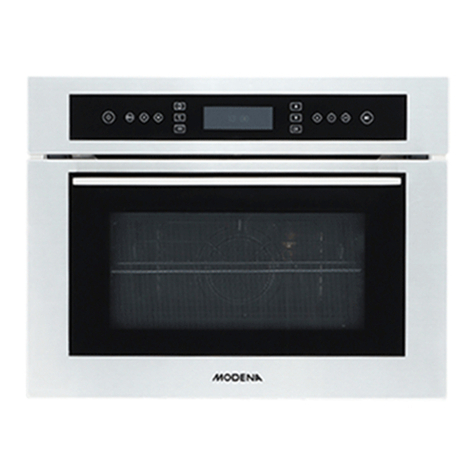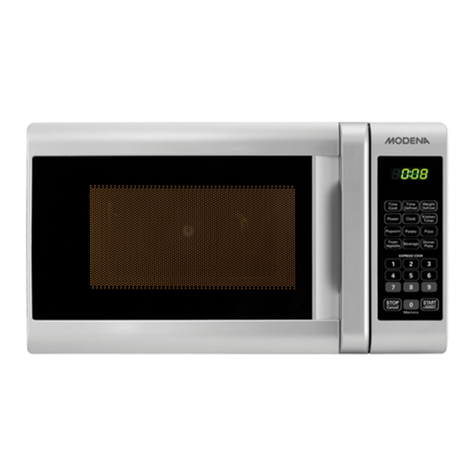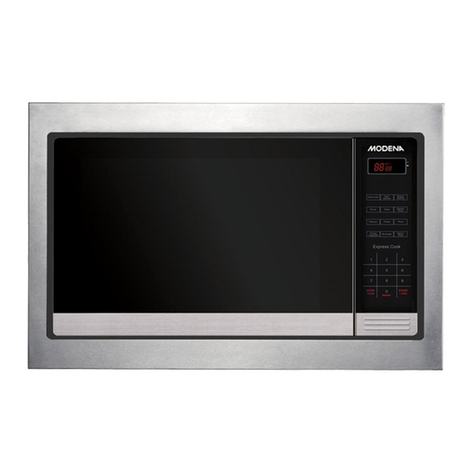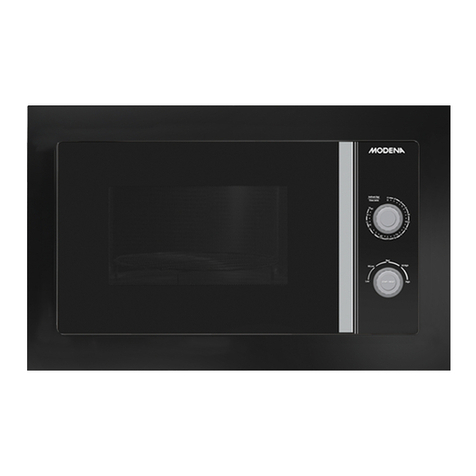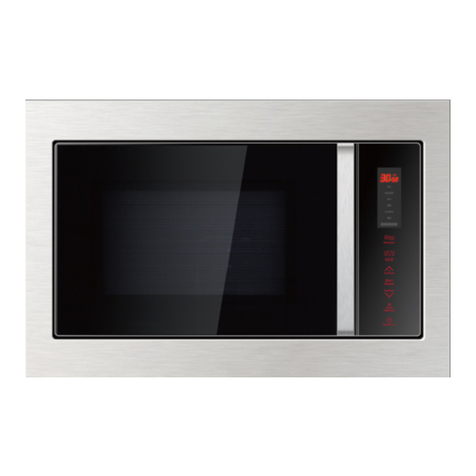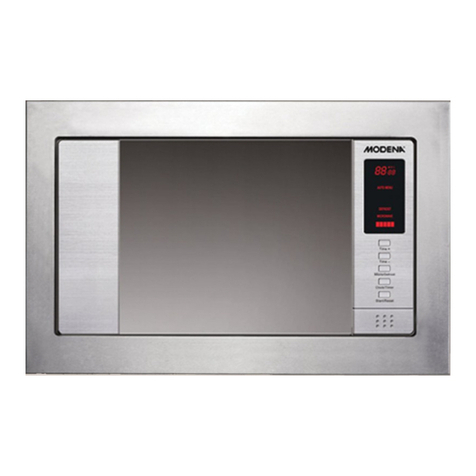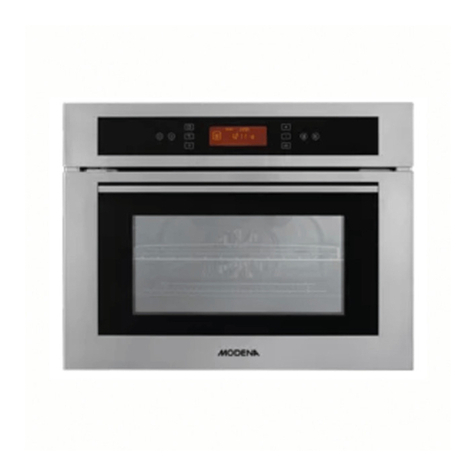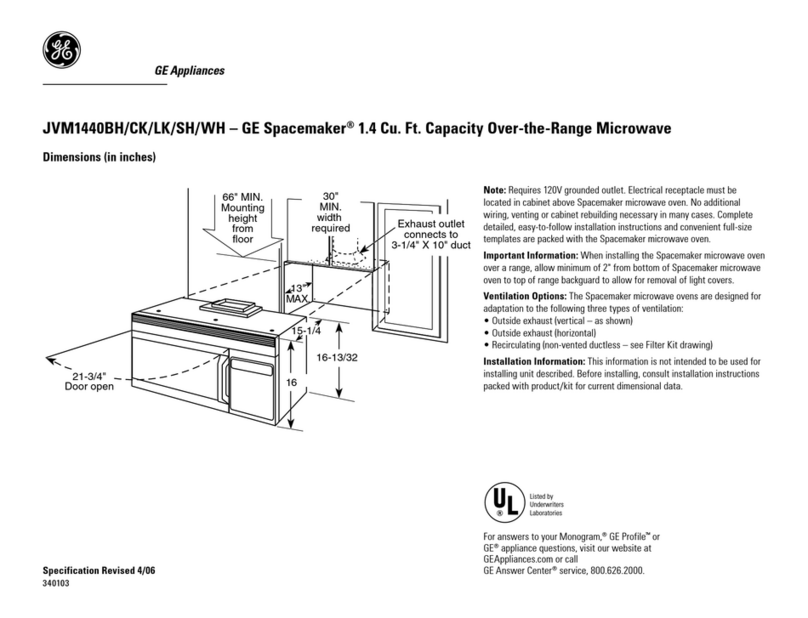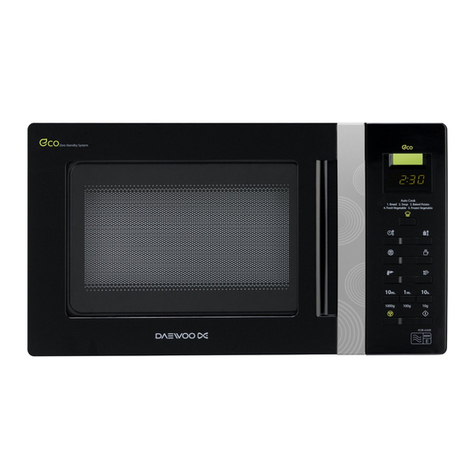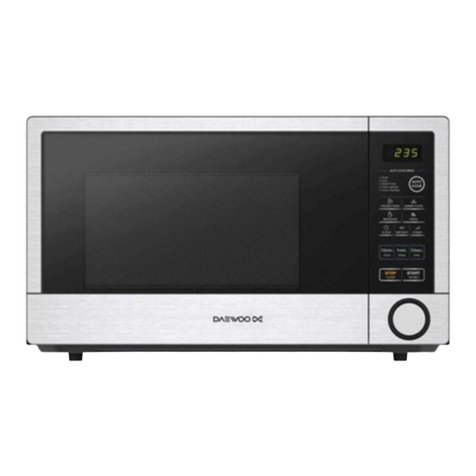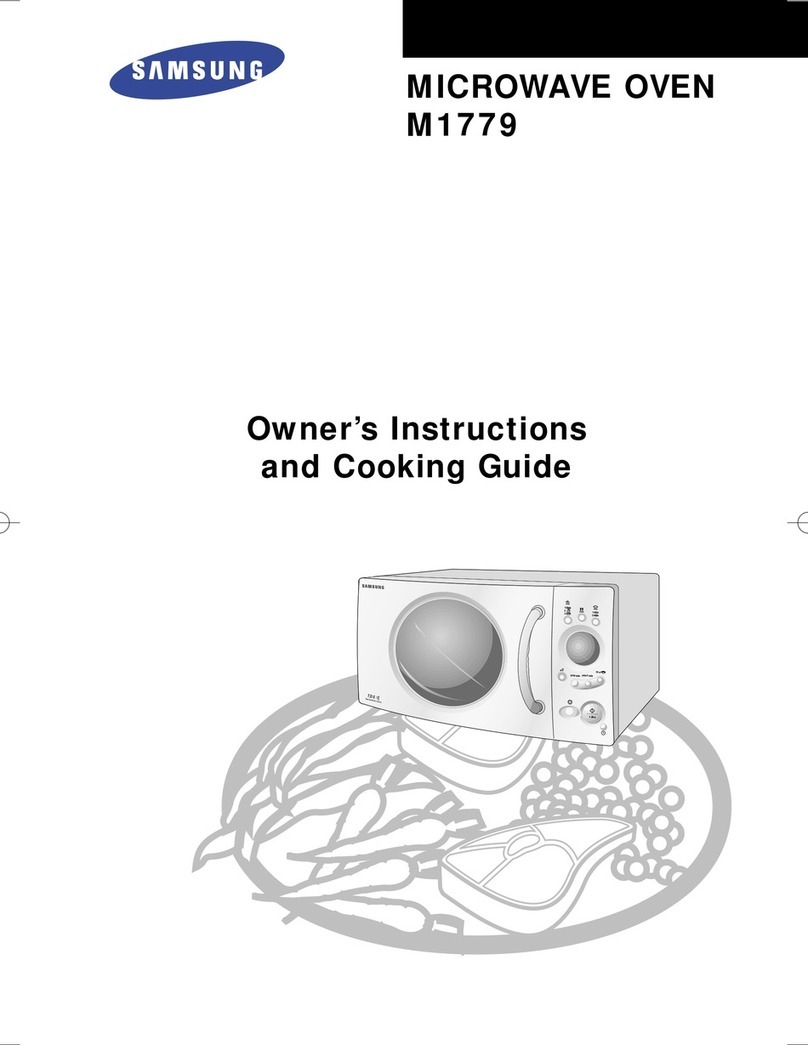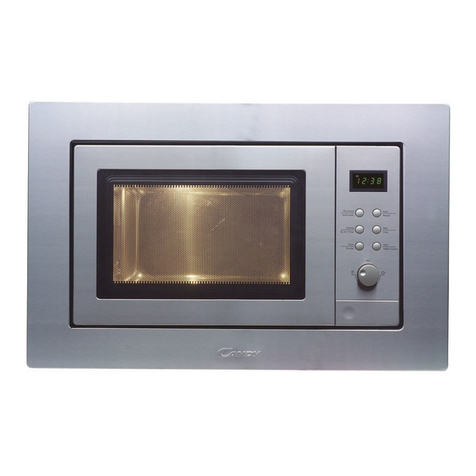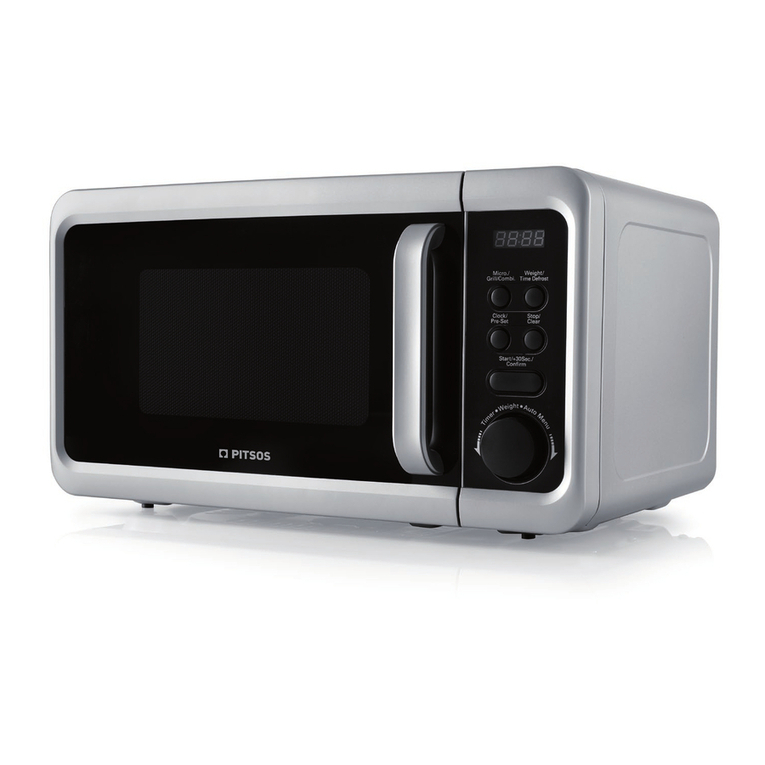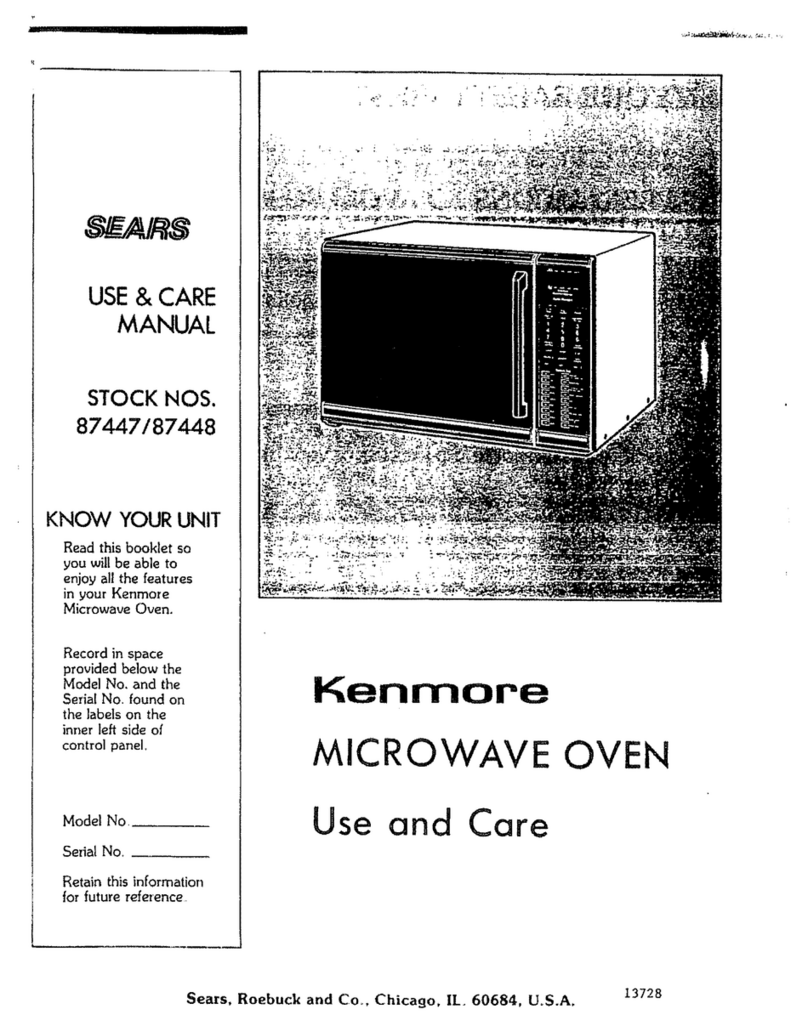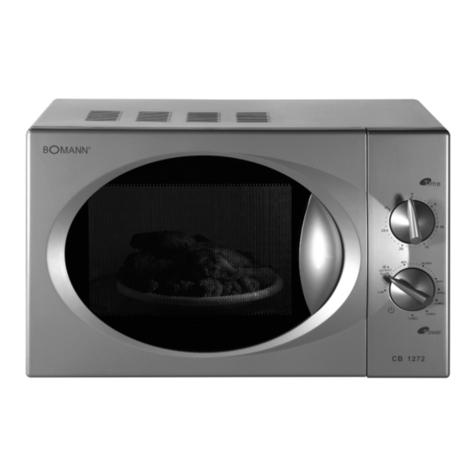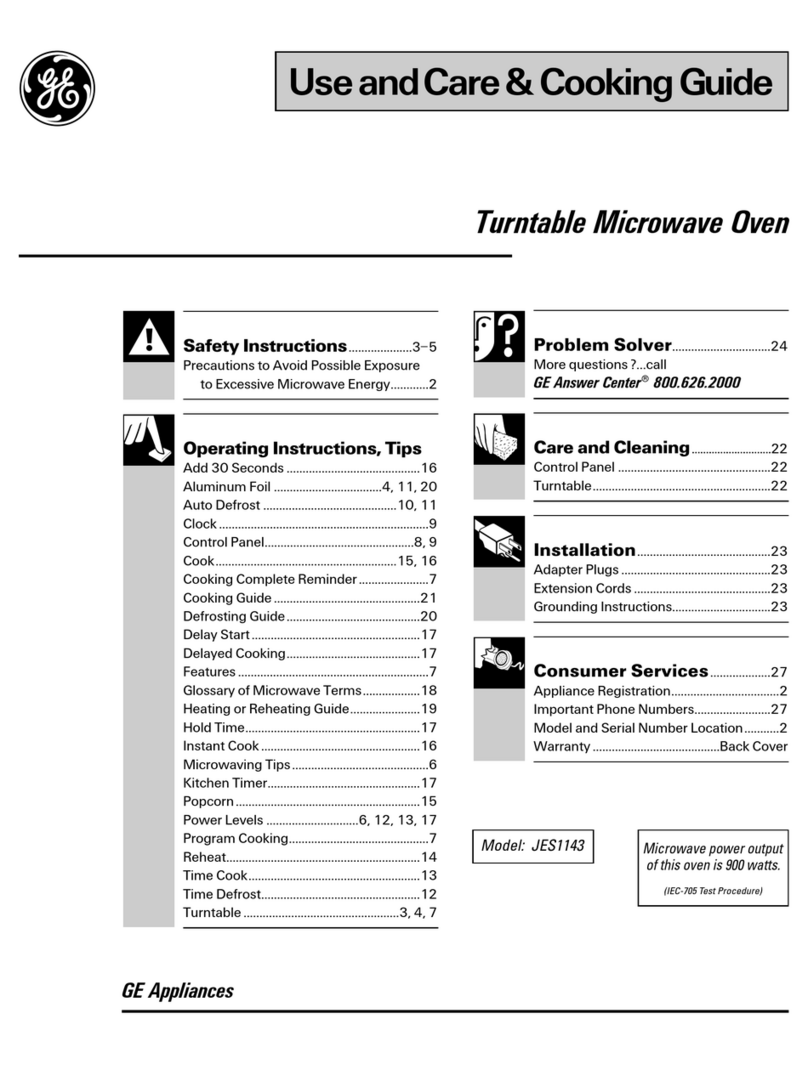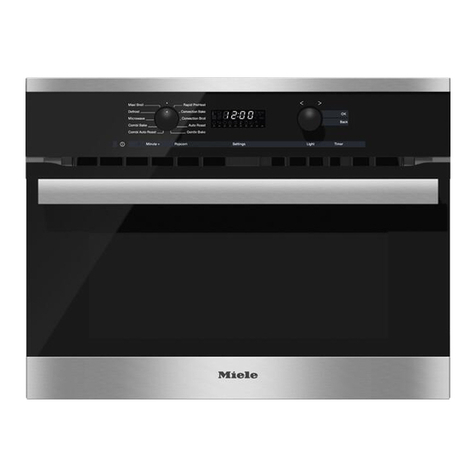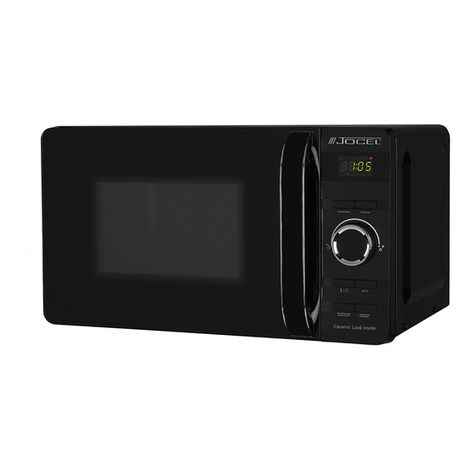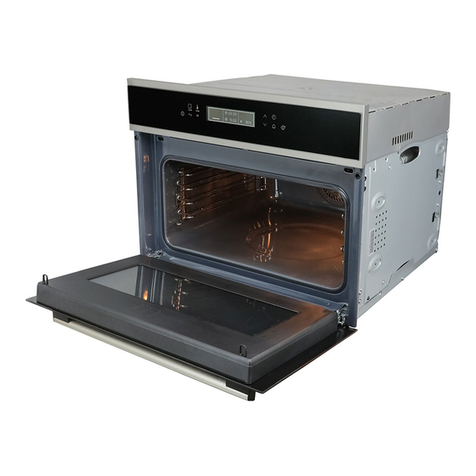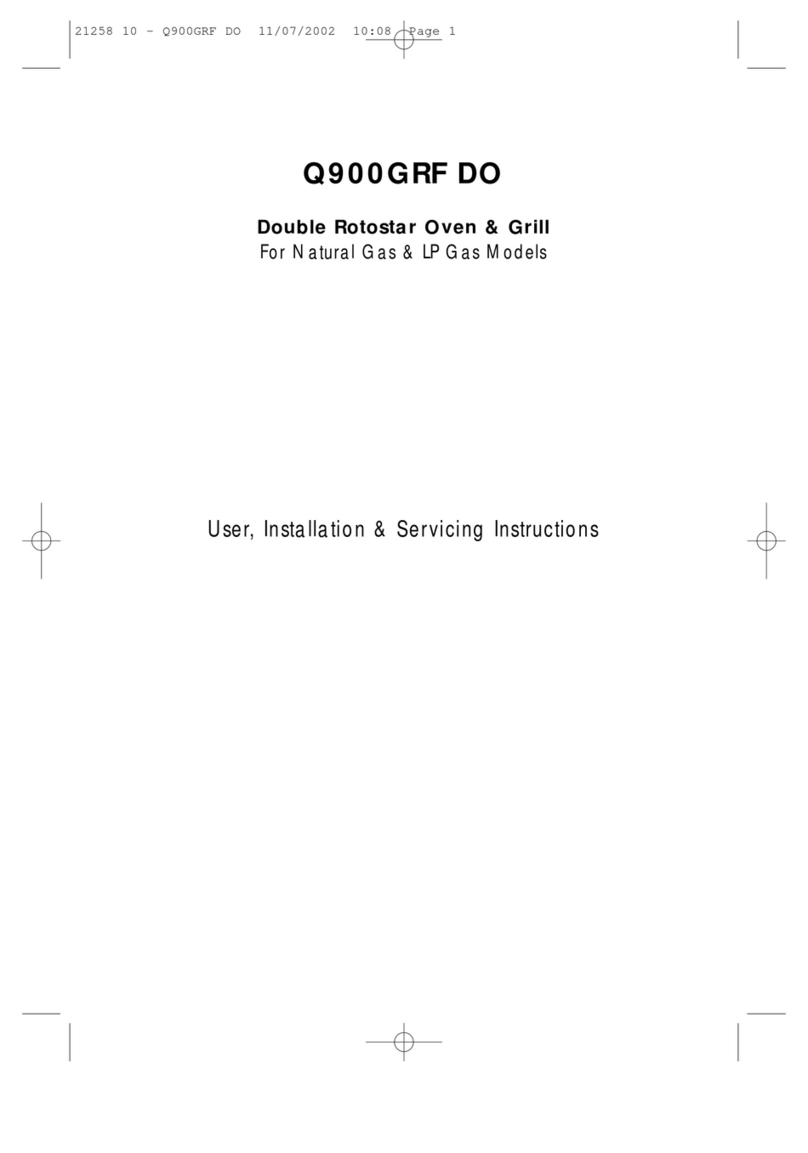4
•
Liquid and food should not be heated in a state still closed as it may cause an
explosion.
•
The microwave oven must have sufficient water flow. Keep a distance of at least
10 cm from the rear, 8 cm from the right and left, 15 cm from the top. Prohibited
move the foot of microwave oven, air blocking prohibited.
•
Only suitable tools that can be used for this microwave oven.
•
At the time of heating food in plastic or paper containers, note furnace
microwave (microwave oven) because there is the possibility of contact.
•
If any odor / not normal, turn off or disconnect the plug and noticed the door
remains closed to withstand fire.
•
Placement of bottles and baby food should be stirred and the temperature
should be checked before it is consumed by infants.
•
At the time of cleaning the surface of the door, door hinges, oven space, can
only use a mild soap, not rude or detergents with a sponge or soft cloth.
•
Conditions microwave oven that is not clean can cause foaming of the surface
which can damage and affect the resistance unit and very risky.
•
Make sure the microwave door is closed when you have finished using it and
when not being used.
•
Do not cover or block any openings on the appliance.
•
To clean the outside of the door using a soft non-abrasive soap applied to a soft
sponge.
•
Do not use a microwave oven to heat corrosive chemicals (for example, sulfides
and chlorides). Steam from the corrosive chemicals may interact with the
contact and springs of the safety interlock switch so it can not operate.
•
Keep the waveguide cover clean at all times. Wipe the inside of the oven with a
damp soft cloth after each use. Do not let the rest of the oil or fat in the oven
space, because they can experience the warm, smoky burn even when using the
oven.
•
Liquids, such as water, coffee, or tea are able to be overheated beyond the
boiling point without appearing to be boiling due to surface tension of the
liquid. Visible bubbling or boiling when the container is removed from the
microwave oven is not always present. This could result in very hot liquids
suddenly boiling over when a spoon or other utensil is inserted into the liquid.
To reduce the risk of injury to persons:
•
Do not overheat the liquid.
•
Stir the liquid both before and halfway through heating it.
•
Do not use straight-sided containers with narrow necks.
